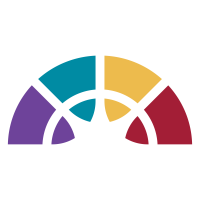Next Great Neighborhood Design Boards
Next Great Neighborhood Design Boards
Three design teams. Six early concepts. Your ideas will shape what comes next.
As part of a public design competition, three nationally recognized teams submitted early concept ideas for reimagining an 80-acre area that includes the former CNO Financial Group campus. These ideas are not final plans—they are meant to spark conversation.
The City of Carmel will select one of these teams to develop a full Master Plan, and your feedback will help shape that plan.
For idea-specific feedback on the designs, please use the Idea Boards below. Want to provide general feedback about the project? Don't forget to take the short community survey!
Want to see these designs in person? Public boards are currently displayed at:
Carmel City Public Library
Monon Community Center
City Hall
Each team's design is presented on its own board. Use them to explore, react, and share your thoughts.
Browse the boards and see what stands out to you
Add your ideas, reactions, or questions—big or small
Respond to one board or all six—it’s up to you
Keep it constructive. Your input will be shared with the selected design team as they develop the full Master Plan.
NOTE: The tabs (at the top in the blue heading) are clickable so that you can navigate as you wish. To leave a comment, use the comment box under the idea board.
We’re looking for authentic, constructive reactions to the ideas on each board. You might consider:
What you like or don’t like, and why
What could make an idea stronger or more useful for the community
Any concerns, questions, or ideas that come to mind
What you think is missing or needs more attention
There are no right or wrong answers—your lived experience matters here.
Frequently Asked Questions
No. The concepts presented are not final plans and this isn’t a vote. The goal of this first round of public engagement is to gather input on community priorities, values, and preferences. These early concepts are meant to spark ideas and guide the City as it selects a design team to lead the next phase: developing a Master Plan.
This design competition is about more than just visuals. Each team was invited to submit two illustrative concepts to show their creative approach and vision for the site, but that’s just one part of how the City will choose the team that will lead the Master Plan.
A selection committee will consider several factors, including: how well the teams reviewed and incorporated ideas from existing planning documents, conversations with local leaders and stakeholders, past experience with projects of this scale, how successfully their projects have been implemented, the experience of individual team members, and their proposed fee for services.
Public feedback on the design concepts is an important part of this decision. It helps the committee understand which ideas resonate with the community and what values should guide the plan going forward.
It’s not common for cities to engage the public this early in the planning process, but Carmel is taking a more proactive, community-first approach. By gathering feedback before a design team is selected, the City is ensuring that the values and priorities of residents help shape both the direction of the Master Plan and the team who will lead it.
This early engagement is just the first step. Once a team is selected, there will be additional opportunities for the public to share input and help refine the long-term vision for the district.
Not necessarily. These are illustrative concepts, not blueprints. They were created to explore possibilities and show how a future district might take shape.
All three teams were asked to design within the same general parameters to ensure a fair comparison. These parameters included a range of potential land uses, such as housing, office space, retail, parks, and yes, a hotel or conference center, based on past studies that suggested possible demand.
No. In fact, this initiative is designed to do the opposite. The existing office buildings in the CNO District are largely vacant and no longer competitive in the market. If left undeveloped, their declining value could negatively impact the City’s tax base. Redevelopment helps preserve and strengthen assessed property values, which supports long-term fiscal health and helps keep tax rates lower across the community.


